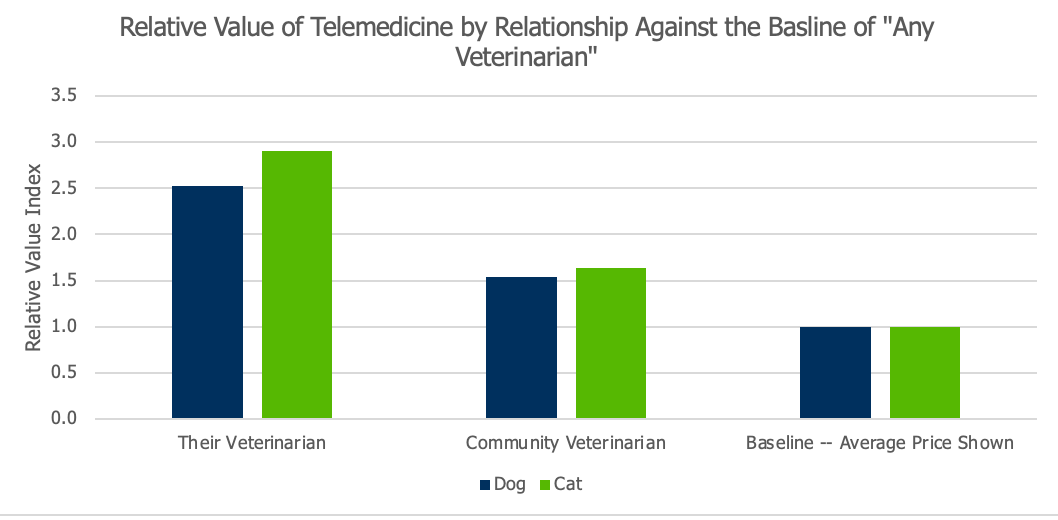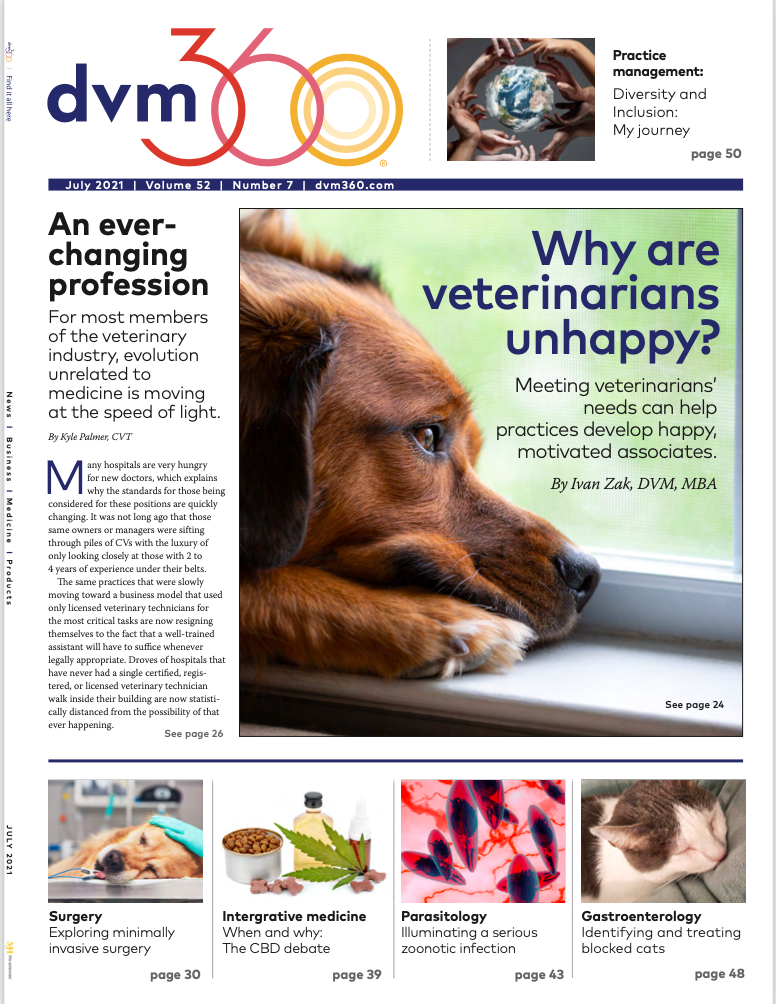Virtual care terminology
Telehealth is an overarching term that encompasses all uses of technology to deliver health information, education, or care remotely.
Telemedicine is a subcategory of telehealth that involves the delivery of information specific to a particular patient and is allowable only with an established VCPR. Many services are possible with telemedicine, as long as a VCPR that satisfies state and applicable federal requirements is in place, and the attending veterinarian is comfortable assessing the patient remotely and feels able to exercise good clinical judgment in caring for the patient. The VCPR protects patients and clients by setting clear expectations for the delivery of veterinary services.
Many veterinary practices implemented or expanded telehealth services in response to COVID-19 restrictions. As we start to welcome clients back into exam rooms, we’ll be wise to think about these technology offerings as more than stop-gap solutions. Beyond the pandemic, telehealth and telemedicine can augment and add value to traditional clinical services — enhancing the client-practice bond, improving compliance and patient health, and providing other benefits to the veterinary team and bottom line.
Setting expectations
Veterinarians and clients both benefit from telemedicine tools because they create additional pathways for communication and data exchange between veterinarians, clients, and veterinary specialists. Additionally, they allow for integration with artificial intelligence, thus helping to identify issues earlier and increasing diagnostic accuracy. Remote monitoring can also assist with case management and provide added information about client compliance with veterinary recommendations.
Quality patient care is always paramount. The same standard of care applies whether a visit is conducted virtually or in person. It’s important to note however that telemedicine isn’t a replacement for in-person exams. That’s why honest communication with the client about what is and is not possible with telemedicine is crucial.
Delivering great service to patients and clients
When used appropriately, telemedicine can enhance continuity of care. Veterinarians and our teams can check in more frequently on patients, and telemedicine tools can help us identify opportunities for earlier intervention when needed. For example, a video check-in can be used to evaluate the healing of incision sites or wounds, monitor changes in mobility, and observe a patient's general demeanor and evidence of a return to normalcy after treatment.
Today's telecommunication tools and software applications also can make it easier and more convenient for clients to seek veterinary care. Particularly for clients who embrace new technologies, and in areas with reliable, high-speed internet—telemedicine services can simplify the process of consulting the veterinarian. Being willing and able to offer telemedicine in appropriate situations can be a value-add that strengthens your bond with both clients and patients.
Technology also can help integrate veterinary specialists into patient care. Not only does it simplify consulting between a general practitioner and specialist, but it also supports 3-way conversations that can help bridge gaps when an in-person visit with the specialist isn’t an option.
Supporting the veterinary team
Another advantage of telemedicine is convenience and improved staff efficiency. Client expectations for after-hours care and consultations can take a toll on even the most dedicated team. Telemedicine can help you deliver after-hours services while still allowing your team members to manage work-life balance.
Telemedicine technologies also can help you better utilize veterinary technicians. For example, a technician can use text messaging to answer post-operative questions, or video chat to demonstrate medication administration or deliver education that supports the veterinarians’ nutritional or behavioral recommendations. These activities support quality patient care and deepen the connection with clients and patients, while also freeing up veterinarians’ time.
AVMA telemedicine resources
Find these and other resources to implement and optimize your telehealth offerings in the AVMA’s Telehealth Resource Center, at avma.org/Telehealth:
- Guidelines for use of telehealth in veterinary practice
- Definitions: Talking about telehealth
- Service providers list
Building your business
Patient-specific telemedicine services are just one part of telehealth. Veterinary practices also can have opportunities to use technology to deliver general education that is not specific to a particular patient. Your technicians, for example, could lead webinars that support a healthy start for new puppy and kitten owners or share the significance of preventive care and can team with veterinarians to deliver information about conditions like hypothyroidism, diabetes, or Addison’s disease. This can help introduce your practice to more people in the community and position your clinic as a valuable resource for non-clients and clients alike.
At the heart of it all, the VCPR
Establishing trust between the veterinarian and client is always key to the successful delivery of veterinary care. Telemedicine is no exception. Creating a veterinarian-client-patient relationship (VCPR) is the first step in building trust, and conducting an in-person exam or premise visit is an important opportunity to get to know both patients and clients. Once that relationship has been suitably established, telemedicine can support and deepen the connection.
One way we see interplay between the VCPR and telemedicine is in the connection between the value pet owners place on telemedicine and their relationship with the veterinarian on the other end. Research shows consumers place higher value on telehealth services offered by their own veterinarian than by a veterinarian they’ve never met.
A recent study conducted by Purdue University economists, in partnership with the AVMA, looked at pet owner attitudes and valuation of telemedicine services. It found that pet owners valued an average telemedicine call 1.5 times more when the platform connected them with a veterinarian in their community, rather than a random veterinarian located anywhere nationally. Moreover, pet owners valued the telemedicine service 2.5 times more when it connected them with their specific veterinarian.
These findings demonstrate the importance of the relationship between veterinarians and clients, especially in the context of telemedicine.
This research1 also indicated a significant demand for telemedicine services, though that demand varied by age. Younger clients with children were the peak demographic desiring telemedicine options. And once again, the research revealed that what is in demand is the ability for clients to reach their specific veterinarian.
More to discover
As a profession, we’re still exploring telehealth and the opportunities it presents. While we’ve learned a lot this past year, that education occurred during a pandemic, with both clients and practices under duress. So there’s a lot of “statistical noise” in what we know about telemedicine demand.
What we do know is that practices implementing telemedicine should deliver what clients want—the veterinarian with whom they already have an established relationship. Nurturing that connection—via telehealth and face-to-face—will lead to improvements in both patient health and practice growth.
Reference
- Widmar NO, Bir C, Slipchenko N, Wolf C, Hansen C, Ouedraogo F. Online procurement of pet supplies and willingness to pay for veterinary telemedicine. Prev Vet Med. 2020;181(105073):105073.


